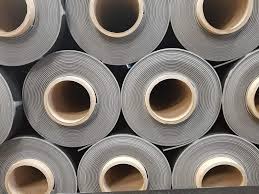Soundproofing Materials For Floors: What Are They?
Soundproofing is a key design consideration for every building to prevent disturbances and enhance sound quality. Sound is critical to our health, but not everybody knows what constitutes a good sound treatment.
Reducing Sound Level That Penetrates Through The Floor
There are several factors that contribute to the quality of your flooring: not just your personal preference. You’ll have to think long and hard before deciding on whether or not you want acoustic or non-acoustic flooring in your home.
When noise is made in your building, it’ll be either absorbed, reflected or transmitted by your walls, ceiling and flooring. The goal of soundproofing is to reduce noise and air movement in your house or flat. Installing acoustic flooring is an effective and efficient way of accomplishing this goal.

There are two ways of decreasing sound level inside the room through the floor:
- minimize sound transmission from neighbors below through the floor, and
- reduce background noise to improve sound in rooms.
Common Building Floor Materials
Everyone knows how noise travels and how to control it, even though the science behind it may not be as clear. Even if the basics are fuzzy, understanding them will help you in quantifying just what’s happening at any given time and where. When it comes to the different materials that are available, the most important material to control sound in an interior is building materials. However, absorptive materials can also be very effective which means that they need to be strategically placed in finished areas of your interior design.
Building materials such as wood and stone all make good in soundproofing. Wood can be used to create an acoustic flooring material that creates a quieter environment while also enhancing the acoustics of the room. Stone could be used in a similar manner but is often less expensive than many options like wood.
Acoustic floor tiles are also a good choice in loor soundproofing. Much like normal acoustic tiles, these help to reduce echo and reverberation. This material is best installed on a concrete or cement slab. The stone is compressed at high pressures and then polished to a mirror-like finish.
Special Isolating Floor Materials
There are a number of special floor materials available for sound control. These products have been designed to provide strategic advantages over traditional materials, and are designed for use in situations where controlling sound or noise levels is of much concern. Many of these products can be used during an initial build or installation project. Some common examples are.
-
Using mineral fiber in your insulation will benefit your room by improving on its soundproofing. Mineral fiber is denser than fiberglass and can offer far better sound-blocking properties. Mineral-fiber insulation is also much higher in a burning temperature than standard fiberglass insulation as well as having lower rates of moisture absorption.
-
Mass loaded vinyl acts as sound barrier and provides a cost-effective, less risky option for protecting your floor. It is easy to install and can adhere to the surface either by adhesive or nails. Adhesive-backed stickers that have been designed to be safe, inexpensive and easy to work with are now available for your sliding mailboxes. You can cut them with a standard utility knife or scissors for easy installation and removal of your mailbox label.
-
Sound deadening floor insulation. This material is commonly used in the floor constructions to create a barrier between the studs and the underfloor. The dense material prevents sound waves from echoing, which is an important aspect for flooring to be able to achieve sound-deadening properties.
-
Rubber decouplers. Floor decoupling is an excellent way to minimize sound transmission. Flooring floating decoupling pads are inexpensive and will allow for an additional level of floor floo, returning the floor to its original state.
Conclusions
We can see that it is quite simple to reduce the sound permeability through the floor in the rooms. You only need to think about the optimal solution, and it can also be applied at the stage of covering your floor with a suitable material. We hope that our article was useful for choosing a soundproofing material for your floors, stay in touch!